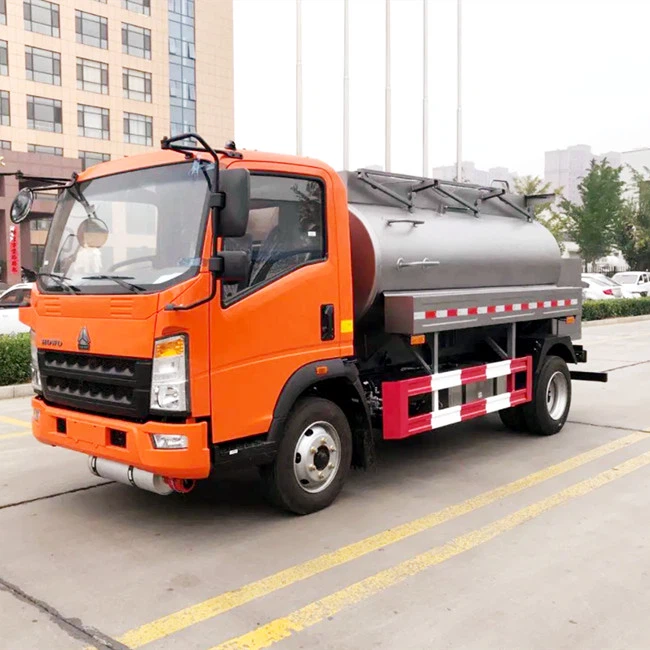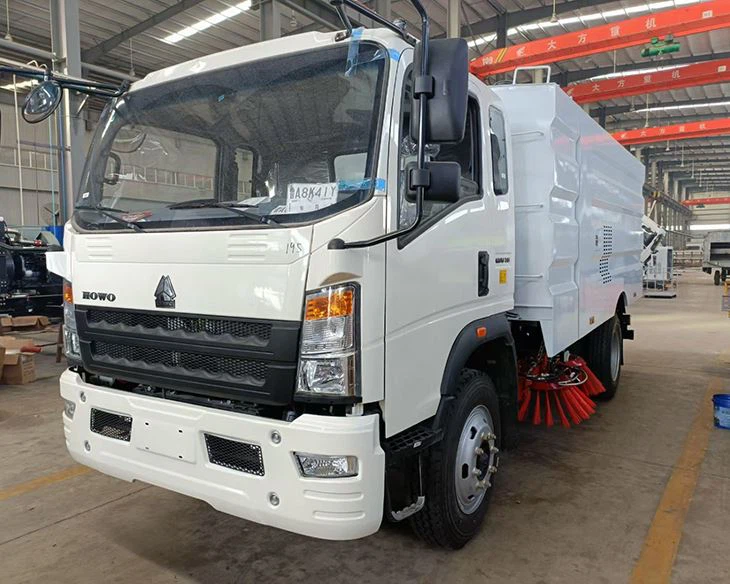Understanding Fuel Truck Capacity: A Comprehensive Guide

In the world of logistics and transportation, fuel is one of the most critical resources. Fuel trucks are essential for delivering fuel to various sectors, including agriculture, construction, and transportation. Understanding fuel truck capacity is paramount to optimizing deliveries and ensuring efficiency. This article dives deep into everything you need to know about fuel truck capacity, including types, features, industry standards, practical implications, and much more.
What is Fuel Truck Capacity?
Fuel truck capacity refers to the maximum volume of fuel a truck can carry. This capacity varies greatly depending on the truck’s size, design, and purpose. Most fuel trucks are designed to transport a specific type of fuel, such as gasoline, diesel, or jet fuel, and the total capacity can range from a few hundred gallons to several thousand gallons.
Types of Fuel Trucks
Fuel trucks come in various types, each designed for specific applications. Here are some common types:
- Tank Trucks: These are the traditional fuel trucks often used for delivering various petroleum products. They typically have a cylindrical tank mounted on the chassis.
- Transport Trucks: Larger trucks that can transport considerable volumes of fuel over long distances; they may carry up to 9,000 gallons.
- Tanker Trailers: These are towed by tractors and can carry even larger volumes of fuel, often exceeding 10,000 gallons.
- Specialized Fuel Trucks: These are tailored for specific uses like aviation or marine fueling.
Understanding Capacity Measurements
Fuel truck capacity is typically measured in gallons or liters, depending on the region. Here’s a brief overview:
| Measurement | US Gallons | Liters |
|---|---|---|
| Small Fuel Truck | 500 – 1,000 | 1,893 – 3,785 |
| Medium Fuel Truck | 1,000 – 3,500 | 3,785 – 13,248 |
| Large Fuel Truck | 3,500 – 9,000 | 13,248 – 34,068 |
Factors Influencing Fuel Truck Capacity
Several factors can influence the capacity of fuel trucks:
Truck Design
The design of the truck, including tank material, shape, and safety features, can significantly affect capacity. For instance, larger and more robust designs enable trucks to carry heavier loads. Stainless steel tanks are common for longevity and minimal fuel contamination.
Regulatory Compliance
Governments and local authorities impose regulations on fuel transportation, affecting the truck’s design and its maximum load. Understanding these regulations can help operators ensure compliance while optimizing capacity.
Volume of Delivery
A company’s client base also influences capacity needs. Companies delivering fuel to large agricultural fields will require larger trucks, whereas those servicing small businesses may operate with smaller tankers.
Practical Example
A fuel delivery company servicing a small town may operate three types of trucks: a small truck (1,000 gallons) for urban deliveries, a medium truck (3,500 gallons) for rural farms, and a larger truck (8,000 gallons) for bulk deliveries to gas stations. This variety allows flexibility and efficiency in operations.
Operational Implications of Fuel Truck Capacity
Understanding fuel truck capacity can significantly improve operational efficiency:
Inventory Management
Knowing the capacity of fuel trucks can help in managing inventory effectively. Operators can plan fuel deliveries based on storage capacity at various sites, thereby avoiding overstock or stockouts.
Route Optimization
Optimizing delivery routes is vital. By understanding capacities, companies can minimize travel distances and time spent on the road. For instance, larger trucks can make fewer trips, reducing fuel costs and labor hours.
Practical Tip
Use route planning software to analyze the most efficient paths based on truck capacity, fuel type, and delivery locations. This can help save both money and time in the long run.
Cost Considerations
The capacity of a fuel truck can significantly impact operational costs, including fuel costs, maintenance, and insurance.
Fuel Efficiency
Typically, larger trucks might have higher fuel efficiency when carrying larger loads than making multiple trips with smaller trucks. However, understanding the load limits and operational costs is necessary.
Maintenance Costs
Larger trucks generally incur higher maintenance costs. Operators should evaluate how maintenance expenses correlate with fuel capacity to make informed purchasing decisions.
Cost Comparison Example

Consider two companies: Company A operates a small truck with a capacity of 1,000 gallons, making 10 trips daily. Company B operates a larger capacity truck of 5,000 gallons, making only 2 trips daily. While Company A has lower transport costs per trip, the total expenses might exceed Company B’s due to increased trips and fuel consumption.

Safety Considerations in Fuel Transportation
With the transportation of flammable substances like fuel, safety is paramount. Understanding truck capacity is crucial for compliance with safety regulations.
Overloading Risks
Operating a truck above its rated capacity is hazardous and illegal. Overloading can lead to tire blowouts, reduced braking efficiency, and accidents.
Emergency Procedures
Companies must establish clear emergency protocols. Training drivers in how to manage spills or accidents is essential, especially when dealing with larger volumes of fuel.
Training Tip
Provide regular safety training sessions for drivers. Include information on handling emergencies and the importance of adhering to the truck’s capacity.
Future Trends in Fuel Transportation
As technology advances, the fuel transportation industry is adapting in various ways:
Electric and Hybrid Fuel Trucks
With growing environmental concerns, electric and hybrid fuel trucks are emerging. While their capacity may differ from traditional trucks, they promise lower emissions and operational costs.

Smart Tracking and Monitoring
Smart technologies that monitor fuel levels, GPS tracking, and route optimization software are becoming prevalent, thereby facilitating more efficient fuel delivery processes.
Industry Example
Companies implementing IoT devices find significant improvements in managing fuel supplies, enhancing delivery efficiency, and ultimately minimizing operational costs.
FAQ Section
What is the average capacity of a fuel truck?
The average fuel truck capacity can range from 1,000 gallons to 9,000 gallons, depending on the truck’s purpose and design.
How do I know what size fuel truck I need?
Determine your delivery requirements, client base, and routes. Consider the amount of fuel you need to transport and how often deliveries are made.
Are there regulations concerning fuel truck capacities?
Yes, there are strict regulations that dictate the design and capacity of fuel trucks, including national and local safety guidelines. Always ensure compliance with these regulations.
What are the safety measures that fuel truck operators must take?
Operators must consistently adhere to weight limits, undergo regular safety training, maintain the vehicle properly, and have emergency protocols in place.
Can fuel trucks carry different types of fuel?
Some fuel trucks are specifically designed to carry different types of fuel, while others may be dedicated to a single type. Understanding this helps optimize performance and safety.
What is the difference between tank trucks and tanker trailers?
Tank trucks have tanks mounted on the chassis, whereas tanker trailers are towed by tractors and can generally carry larger volumes of fuel.
